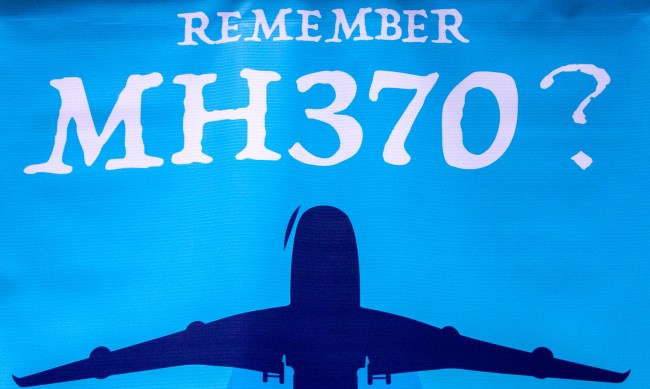
Getty Image
- It’s been over 7 years since Malaysia Airlines Flight MH370 disappeared without a trace
- Richard Godfrey, one of the world’s leading MH370 investigators, believes new technology can pinpoint the location of the missing aircraft
- More Flight MH370 news here
March 8, 2021 marked seven years since Malaysia Airlines Flight MH370 vanished into thin air, taking its 239 missing and crew members with it.
Over those seven years there have been a plethora of theories about what happened to Malaysia Airlines Flight MH370, but so far none of them have panned out. We still have no real idea what happened on that fateful day.
That being said, there are still many people out trying to figure it out.
Related: New Discovery In The Case Of Missing Flight MH370: ‘Secret’ Cargo Weighing Over 4 Metric Tons?
One of those people is aerospace engineer Richard Godfrey, one of the world’s leading MH370 investigators.
In a new research paper on the subject of the disappearance of Malaysia Airlines Flight MH370, Godfrey discusses a new technology called Weak Signal Propagation (WSPR).
Godfrey, a founding member of the MH370 Independent Group, believes that the pilot Zaharie Ahmad Shah, who was reportedly “clinically depressed,” deliberately changed the direction and speed of the plane’s flight path to avoid giving a clear idea where he was headed.
“WSPR is like a bunch of tripwires or laser beams, but they work in every direction over the horizon to the other side of the globe,” Godfrey explained to AirlineRatings.com.
“The pilot of MH370 generally avoided official flight routes from 18:00 UTC (2 am AWST) onwards but used waypoints to navigate on unofficial flight paths in the Malacca Strait, around Sumatra and across the Southern Indian Ocean. The flight path follows the coast of Sumatra and flies close to Banda Aceh Airport,” Mr. Godfrey says in the paper.
“The pilot appears to have had knowledge of the operating hours of Sabang and Lhokseumawe radar and that on a weekend night, in times of little international tension the radar systems would not be up and running.”
Godfrey also added that “in case the aircraft was detected, the pilot also avoided giving a clear idea where he was heading by using a fight path with a number of changes of direction. These changes of track included toward the Andaman Islands, towards South Africa, towards Java, towards 2°S 92°E (where the Flight Information Regions of Jakarta, Colombo, and Melbourne meet) and towards Cocos Islands.
“Once out of range of all other aircraft, at 20:30 UTC (4.30 am AWST) the pilot changed track and headed due south.”
Related: Chief Engineer At EgyptAir Shares His Incredible Theories About The Disappearance Of Flight MH370
It is this new information that leads Godfrey to believe the deviated flight plan for MH370 was “carefully planned.”
Using this data, Godfrey now estimates that MH370’s crash site is in somwhere the southern Indian Ocean at 34.5 degrees south, southwest of Western Australia.
“The level of detail in the planning implies a mindset that would want to see this complex plan properly executed through to the end,” says Godfrey.